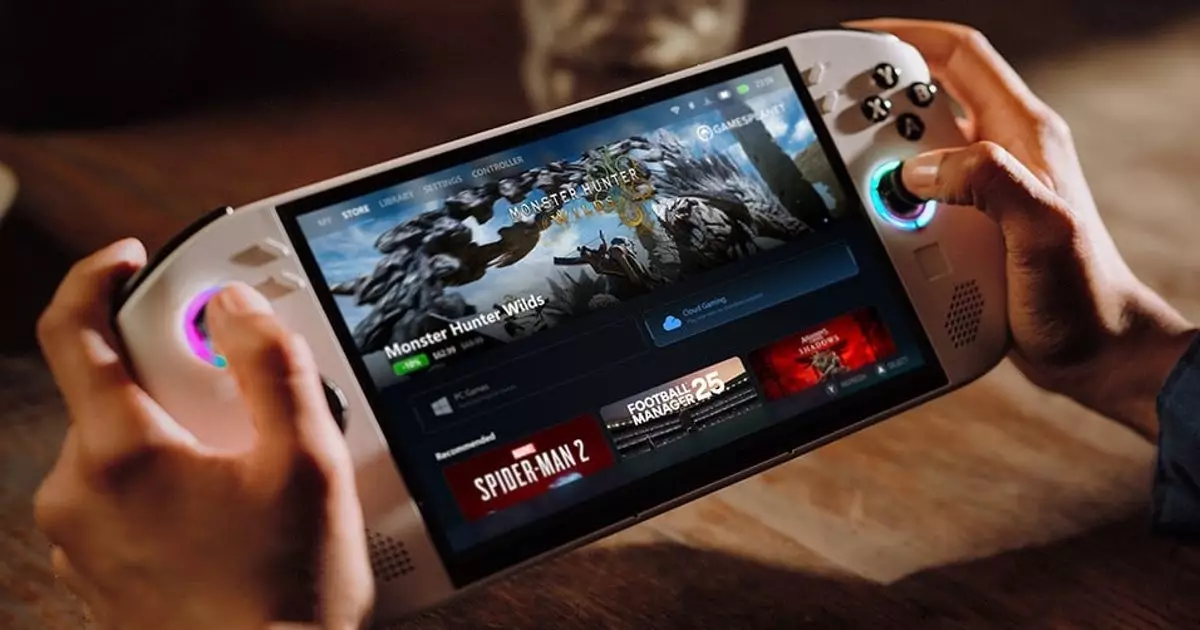For many Steam Deck users, the journey of discovering new games begins with a fleeting moment of hope as they navigate to a game’s page on the Steam store. They find themselves gazing longingly at the green tick mark that signifies compatibility with their beloved handheld device. This longing encapsulates the essence of the Steam Deck Verified program, initiated by Valve to categorize games based on their operational efficiency on the Steam Deck. However, a newfound excitement is brewing in the gaming community with the expansion of this compatibility program, aimed at evaluating games across the broader SteamOS landscape.
With the arrival of devices like the Lenovo Legion Go S, there is a burgeoning recognition of SteamOS’s potential beyond the Steam Deck. Valve is keenly aware of the diverse hardware ecosystem that can utilize SteamOS, and this expansion is not just a technical update but a significant cultural shift for gamers. It acknowledges their needs and aspirations for an inclusive gaming environment where compatibility matters.
The Mechanism Behind Compatibility Ratings
Valve’s ambitious plan to adopt a more comprehensive compatibility testing system is an intelligent approach to managing the complexities of gaming on various devices. The reality is that not every game can be tested on every conceivable configuration, given the vast array of devices that can run SteamOS. This is where Valve’s use of existing data gathered from the Steam Deck’s verified games can create a more informed categorization—labeling games as either SteamOS Compatible or Unsupported.
However, one must ponder the implications of these new labels. While it’s uplifting to know that over 18,000 titles might be categorized as compatible right from the launch, we should remain cognizant of the nuances that come with this system. The absence of essential factors like frame rates and input performance in these new ratings raises questions about how deeply the ratings reflect the true user experience across devices. For instance, a game marked as “Compatible” may still present challenges in terms of optimization, leading to a potential disparity between expectations and reality.
Impact on Game Availability and Development
The ripple effect of this initiative extends beyond mere compatibility indicators. By fostering a system where game developers are incentivized to consider SteamOS in their programming, Valve is actively shaping the future of gaming on portable PCs. The significant expectation is that more developers will begin to embrace SteamOS, knowing that their games can reach a wider audience through compatibility ratings. This shift could redefine the landscape, enabling a renaissance of handheld gaming devices that prioritize quality and stability over mere hardware specs.
Moreover, the anticipated influx of new devices that support SteamOS could lead to innovative hardware designs unabashedly inspired by the Valve philosophy. As Valve anticipates greater participation from manufacturers, the potential for variety in the market emerges—encouraging competition that could drive advancements in both software and hardware development.
A New Era for Gamers
Given the increasing options for handheld gaming, the discussion surrounding SteamOS compatibility is more crucial than ever. The recent leaks about devices like the Asus ROG Ally 2 hint at a challenging road ahead, with significant ties to the Microsoft ecosystem potentially hindering flexibility and innovation. However, the allure of a smooth and robust OS experience, as showcased by SteamOS, may prove irresistible for many developers and users alike.
Ultimately, the prospects of expanded compatibility indicators provide gamers with a clearer roadmap as they traverse the myriad of gaming options. SteamOS has carved out a niche that prioritizes usability and performance, setting the stage for a significant evolution in how games are developed, marketed, and played. As the gaming community embraces these changes, there is reason to be optimistic that the combination of enhanced compatibility and innovative hardware will lead to an incredibly rewarding and enriching gaming experience for all.

